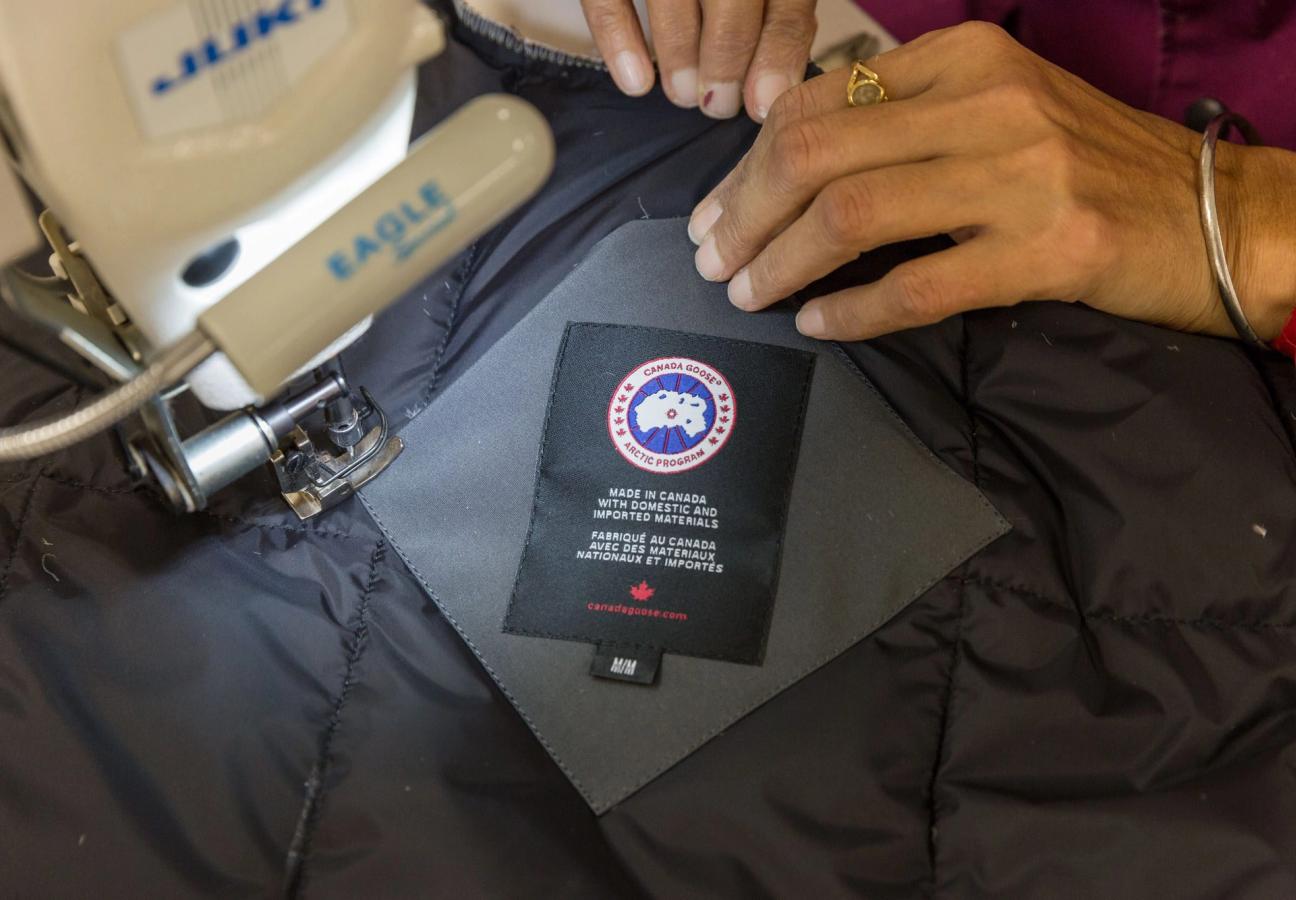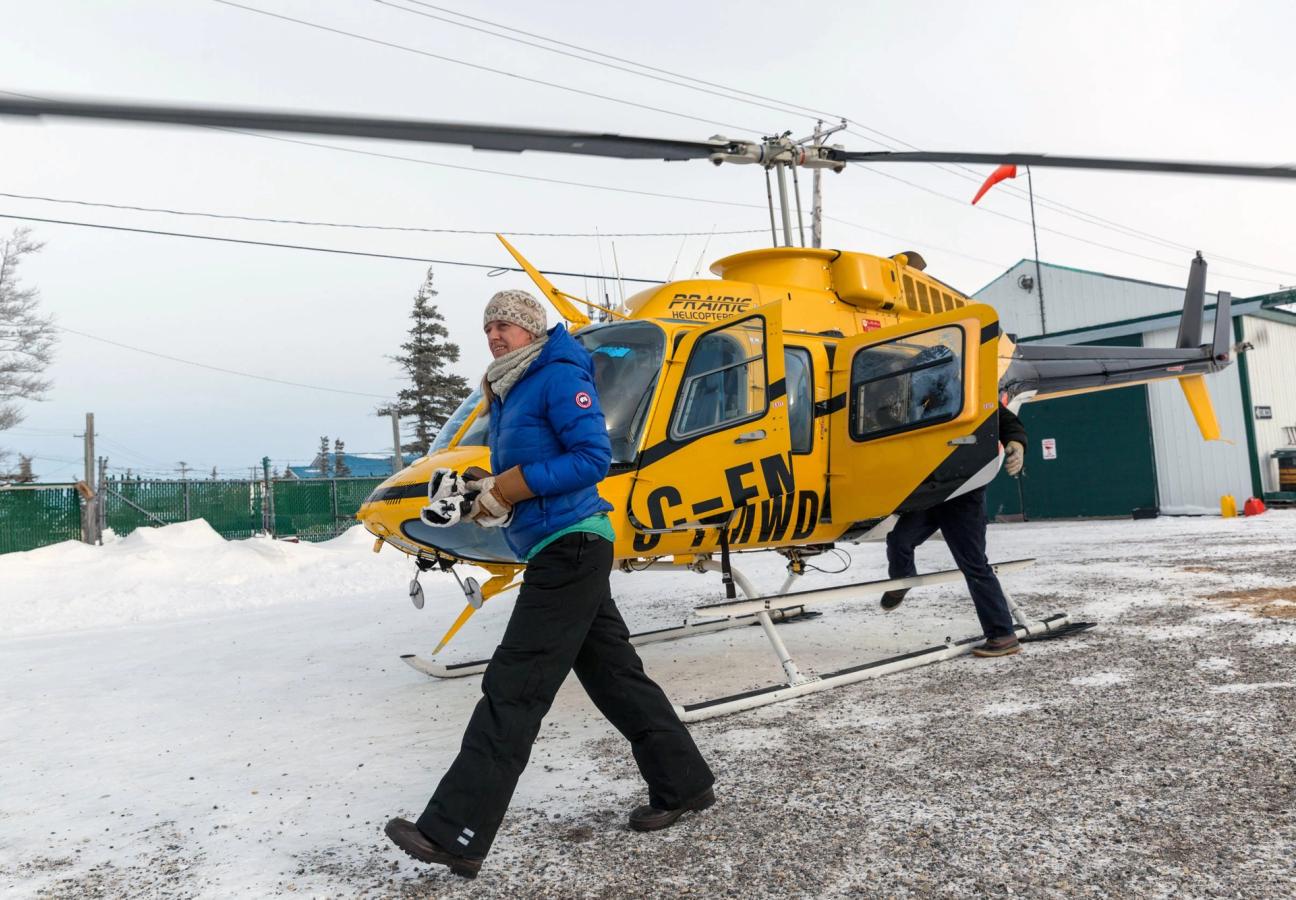

Words: Jonathan Wells
Photography: Brett Gundlock
Armed with more than just a great name, BJ Kirschhoffer is clambering down into thigh-high snow with a high-powered rifle. Seconds earlier he was behind the wheel, but the sun is fading quickly over the sea ice of Canada’s Hudson Bay — and we’ve hit a drift.
As Kirschhoffer disappears into the dark — all beaver skin mittens and curly hair — to fix the problem, a gust of frosty air punches its way into the tundra buggy. Another gun skitters along the dash, caught by the cold Canadian wind. It’s one of many firearms but, like Kirschhoffer’s rifle, they are necessary accessories out here in the Great White North.
For hidden out there, somewhere between the snowstorm and the dying light, are almost a thousand polar bears.
This is the roving research vehicle of Polar Bears International — a towering truck rolling on six-foot snow tyres and stocked with more Canadian whiskey and high-tech tracking equipment than the Mounties’ special branch. The non-profit organisation is based in the nearby town of Churchill, Manitoba — the ‘Polar Bear Capital of the World’ — and has been researching issues endangering polar bears for over 24 years.
Made up of a small group of passionate conservationists, scientists, and volunteers, PBI exists to help secure a future for polar bears across the Arctic — pushing beyond borders and bottom lines to help conserve polar bears and the sea ice they depend on. Through media, science, and advocacy, they work to inspire people to care about the Arctic, while keeping things on course on the ground.
Awaiting Kirschhoffer’s return, the team is a flurry of activity. Bustling about their workstations, the PBI team are resplendent in bright blue parka jackets — bearing the non-profit’s logo on one shoulder, and the badge of Canada Goose on the other.
The winter clothing brand, headquartered hundreds of miles away in Toronto, provides the jackets, hats, overalls and gloves for the entire team. But PBI, an environmentally-minded organisation, has received criticism for partnering with Canada Goose — a brand no stranger to controversy.
“We’re a conservation organisation, not an animal rights organisation,” says the NGO’s chief scientist, Dr. Steven Amstrup, in reference to the continued allegations of animal cruelty levelled against Canada Goose. “So, first and foremost, we’re interested in sustainability.”

The winter wear brand, Amstrup explains, is at the forefront of sustainable clothing creation. Comparable heavy-duty coats and mid-layers are manufactured using products of the oil industry — fake furs and synthetic fabrics that cause as much damage to animals as using natural fibres, albeit indirectly.
“We get a lot of pushback and criticism,” says the scientist. “People saying: ‘Why are you working with Canada Goose? They use furs.’
"We’re a conservation organisation, not an animal rights organisation..."
“But I say to those people: Look at the alternatives. Even where Canada Goose are using synthetic fibres — such as nylon — they’re looking for natural alternatives, like rayon that comes from trees. Like us, Canada Goose are really, seriously interested in sustainability — and that means making a huge effort to use sustainable fibres.”
And the science checks out. By continually burning fossil fuels such as oil and coal, humankind has spent the best part of the last century adding to the layer of greenhouse gases that encircle the earth. As a result, global temperatures have spiked, and sea ice — along with many other worldwide ecosystems — have been thrown into turmoil.
The World Wildlife Fund has reported rapid species loss due to this warming; between 1,000 and 10,000 times higher than the natural extinction rate.
This is the reason, explains Amstrup, that PBI has no qualms partnering with Canada Goose. Natives to these icy plains have been using animal hides to stay warm for centuries— and, although using fur has a clearer effect on animals in the short term, he believes synthetic fibres will be more detrimental to all life in the long run.
Every Canada Goose jacket milling around our stranded tundra buggy, filled with Canadian Hutterite down and some trimmed with coyote fur, passed through 13 stages of manufacture when it was made. And these particular coats, in a signature royal blue, are part of the brand’s PBI Collection — of which a percentage of the proceeds are donated to the Churchill-based non-profit with every new sale.
Yet even as we sit on board the buggy, tracking and protecting these giant sub-Arctic bears off the back of Canada Goose’s donations, there are still animal activism groups around the world unconvinced by the brand’s increasingly responsible pursuits.
Last autumn, a new flagship store on Regent Street played host to activist group Surge, who spent their time and energy very publicly accusing Canada Goose of unethically sourcing fur and feathers. And, just last month, PETA branded their coats “the worst gifts of the holiday season”.
But it’s a bad rap that unfairly ignores Canada Goose’s modern sourcing methods, says brand President & CEO Dani Reiss. They undeniably still use real fur and down, he says, but Canada Goose only continue to use these natural, renewable materials because the alternatives are not practically — or environmentally viable.
"Unlike a fashion brand, we use fur where it’s needed, because it is functional..."
“Down is recognised as the world’s best natural insulator,” says Reiss. “Each ounce of down has approximately two million fluffy filaments that interlock and overlap to create insulating pockets of air, and that’s what keeps you warm.
“Unlike a fashion brand,” he continues, “we use fur where it’s needed, because it is functional. Our jackets are still relied on by the people who live and work in the coldest places on earth, so everything we make has to work.”

In addition, Reiss stresses that the ‘Canada Goose Fur and Down Transparency Standards’ go above and beyond what is required by industry regulations, and that the company works to ensure that all materials they use are sourced from animals that have not been subjected to unfair practices, inhumane treatment or undue harm.
“We also started the Canada Goose Resource Centre program 10 years ago,” the CEO adds, “donating surplus material to northern communities as a way of authentically and meaningfully giving back, as well as celebrating the people, culture and heritage of the North — not to mention donating over $2 million during our partnership with PBI.”
Whatever your stance on Canada Goose, their influence on this small Manitoban town is undeniable. Since the port and railway closed, the townsfolk have been struggling — but PBI have used some of the $2 million from the clothing brand to create a new visitor centre. Bright blue, and thoroughly-insulated, it is the first new build on the town’s main street for over a decade, and the lynchpin of a burgeoning tourism industry.
The support of Canada Goose is clearly held dear and greatly appreciated by Polar Bears International. It may strike you as strange that the non-profit has remained committed to the brand through all of the adversity and criticism, but as the snow swirls outside the buggy, it’s clear to me — and everybody on board — why it is.
Kirschhoffer bundles back aboard, shaking fresh flakes from his Canada Goose overalls and pulling together the collar of his coat. And, as he leans over, he chatters out four words that simply explain this fundamental, if improbable, partnership.
“It’s cold out there.”
Looking to buy? These are the best winter coats, and what they say about you…


